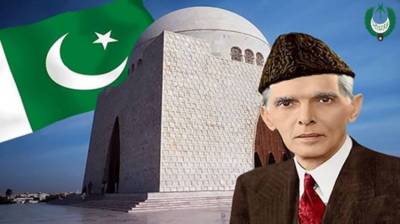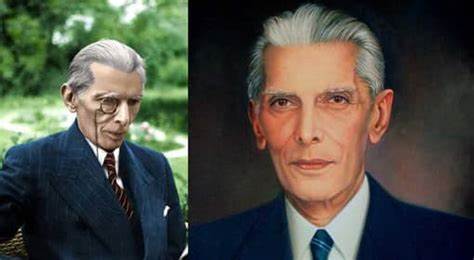Quaid-e-Azam is one of the most revered figures in Pakistan’s history. He was born in 1883 and passed away in 1948, leaving a lasting legacy. In this article, we will explore some of the most powerful Quaid-e-Azam moments, which will help you to better understand this remarkable individual. From his fight for independence to his advocacy for education and social justice, these moments will have a profound impact on your understanding of Pakistan’s history and culture.
Quaid-e-Azam’s Birth

1. Muhammad Ali Jinnah’s Quaid-e-Azam: Pakistan’s Founding Father
Muhammad Ali Jinnah was born on December 25 , 1876, in the city of Karachi in British India. As the founder of Pakistan, Quaid-e-Azam is considered one of the most important figures in the country’s history.
Quaid-e-Azam was born into a Muslim family of modest means. He worked as a lawyer before traveling to England to advocate for the rights of Muslims in British India. In 1916, he traveled to London to present his case before the Imperial War Cabinet. After his presentation, he became a well known figure in Britain and helped raise awareness about Muslim grievances in British India.
In 1935, Quaid-e-Azam returned to Pakistan and helped lead an effort to gain independence from British rule. In 1947, after months of negotiations, Pakistan became an independent state with Quaid as its first Prime Minister.
Quaid-e-Azam is considered one of the greatest leaders in Pakistani history and played an important role in making Pakistan an independent nation. His legacy will continue through the work that continues to be done by Pakistanis today in their quest for freedom and democracy.
Quaid-e-Azam’s Early Years
Mohammad Ali Jinnah, popularly known as Quaid-e-Azam was born on 18 September 1876 in the city of Bombay (now Mumbai), then part of the British Raj. He was the founder and first president of Pakistan. He died on 16 December 1948.
Quaid-e-Azam was born into a middle class Muslim family in what is now Maharashtra, in southern India. When he was just five years old, his father, Abdul Qadeer Khan, died and he and his mother were left to fend for themselves. They moved to Sindh where Quaid’s father had begun working as an assistant commissioner for the British government.
Quaid-e-Azam attended a British school in Karachi and then enrolled at Oxford University in England. However, he dropped out after only one year due to financial difficulties. In 1906, he traveled to Punjab to take up a position with the constitutionalist group Ahl-e-Hadith wal Jama’at (The People of Tradition and Religion). However, this group soon fell apart and Quaid returned to England in 1907.
In 1911, Quaid returned to India and joined the nationalist movement led by Mahatma Gandhi. He became a close associate of Gandhi and helped him organize protests against British rule. In 1915, Quaid traveled to Europe to raise money for the nationalist cause but failed to secure financial support from any major political figures. He also visited Russia but did not gain
Quaid-e-Azam’s Struggle for Democracy
The struggle of Quaid-e-Azam for democracy is a moment that many Pakistani people remember and cherish. The Muslim League had been ruling the country for over two decades, during which time they had restricted any form of political opposition. Despite this, Quaid-e-Azam continued to speak out against their regime and campaigned tirelessly for democracy.
On August 15, 1947, he delivered a speech in Lahore entitled “A Plea for Democracy”. In it, he called on the Muslim League to allow for unrestricted political opposition and promised to work towards achieving this goal himself. This speech marked a significant turning point in the history of Pakistan and helped to pave the way for democratic reforms later on.
Quaid-e-Azam’s efforts paid off in 1954 when he was elected as the first Prime Minister of Pakistan. He continued to work towards democracy and free speech throughout his time in office, even going so far as to repeal laws that prevented criticism of the government. He also established the National Assembly (which later became Pakistan’s parliament) and strengthened ties with other countries in order to promote trade and economic development.
Quaid-e-Azam’s struggle for democracy is an important example of how one person can make a significant impact on society. His efforts paved the way for more open government and freedom of speech across Pakistan, which has made it one of the most liberal and democratic countries in the world today.
Quaid-e-Azam’s Legacy

Pakistan’s first and foremost leader, Muhammad Ali Jinnah, had high regard for Quaid-e-Azam. Jinnah called him the “Father of the Nation.”
Quaid has left an indelible mark on Pakistan and its people. He is credited with leading Pakistan to independence in 1947 and helping establish a modern, democratic society. His vision helped shape Pakistan into a prosperous, Muslim-majority country.
Quaid was also a renowned orator and served as the country’s first Prime Minister. During his time in office, he made important decisions that helped lay the groundwork for Pakistan’s future growth.
During his lifetime, Quaid received numerous awards and honors, including the Nobel Peace Prize and the Bharat Ratna (India’s highest civilian honor). He was also named a UN Messenger of Peace.
Quaid died in 1988 at the age of 85 after a long illness. He remains beloved by millions of people across Pakistan and around the world for his contributions to national progress and harmony.
Quaid-e-Azam Day
Pakistan has celebrated Quaid-e-Azam Day since 1948 to commemorate the birthday of its founder, Muhammad Ali Jinnah. The day is also a national holiday. Many events and activities are organized in honor of Quaid-e-Azam, including speeches and exhibitions. Every year, schools and colleges hold special ceremonies to celebrate his memory. In recent years, there have been more initiatives to promote education and awareness about Quaid-e-Azam’s legacy.
